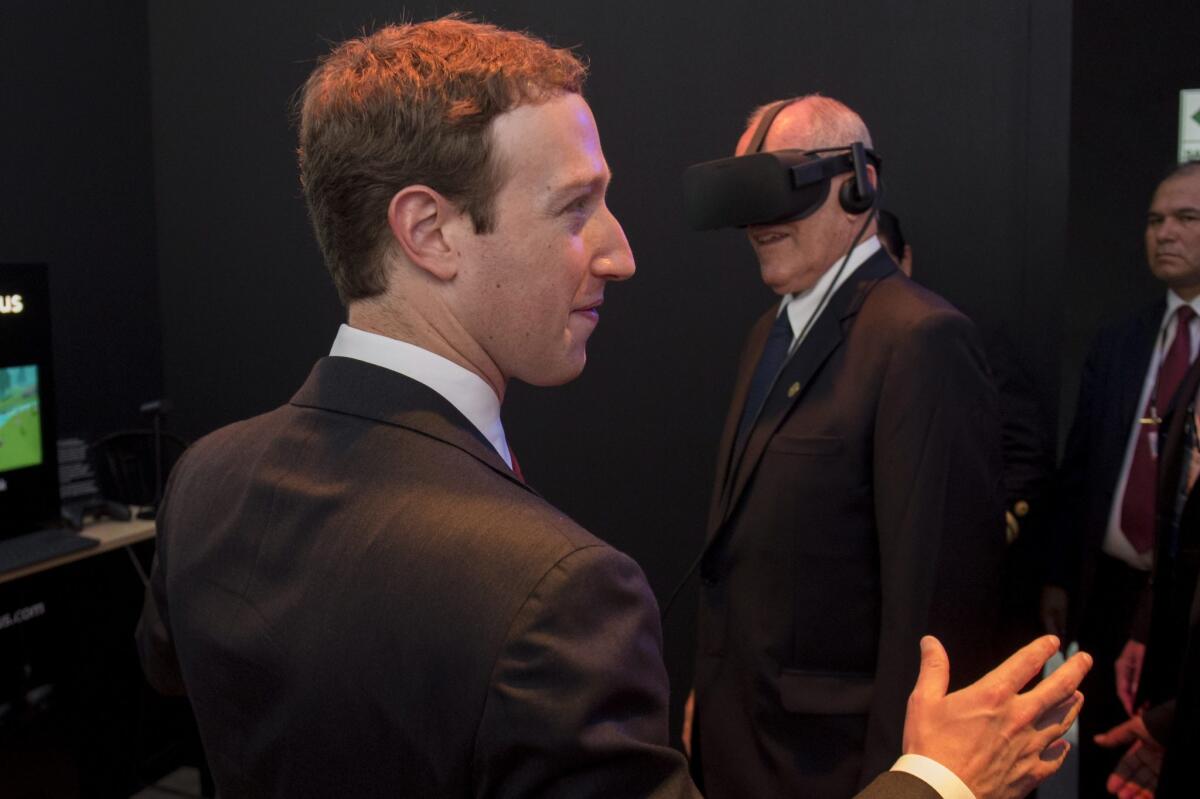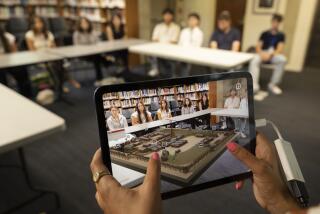Op-Ed: Community is the ‘killer app’ missing from virtual reality

I have played with several virtual reality systems over the last few years, but just recently bought my own PlayStation VR headset for my family. It’s pretty whiz-bang. Although VR still has kinks (including motion sickness for many users), it’s impressive how well even these first-generation consumer products convey what researchers call “presence,” the feeling of truly being transported somewhere else. I have piloted Starfighters through dogfights, descended through a coral reef and walked through virtual theme parks.
If only it weren’t so lonely in all these beautiful locales.
The social aspect of the Internet and games has been my field of research for 15 years. I’ve run dozens of experiments and analyzed the “big data” of detailed play records from billions of gamers. What I consistently find is that the social aspect of a new technology — how it enables, restricts or encourages us to connect with each other — matters more than just about everything else.
Turns out that the best “content” is other people. When people get together in online games they may fight dragons or shoot lasers — but they are being entertained primarily by the other players. Even single-player titles beg to be talked about with others, so chat rooms, blogs and podcasts pop up around them.
Eventually, some smart digital media designer will realize that the killer app is each other.
When tech companies suddenly have a big hit, it’s often because they got the social part right by accident. If we look at the most popular games of recent years — “World of Warcraft,” “League of Legends,” “Pokémon Go” — they are each a sparkly excuse for playing with and being around others. You can find better graphics and better stories in their genres, but they aren’t as much fun.
As a species, we’re still basically social monkeys. Without others, we grow bored, restless, frustrated and sad. There’s a reason that solitary confinement is such cruel punishment. So as new technologies emerge, the central question to ask is this: Does it help us enjoy one another, or get in the way? If you’re looking for a basic test of which technologies will go big or fall flat, that’s it.
Remember “Second Life,” the virtual world where we were all supposed to be building homes and careers by now? It still exists, but it’s a little corner of online space because it ultimately didn’t do a great job of connecting people — at least not better than a phone call or an email. And of course you can look on any street and see the opposite result with smartphones, which nearly 70% of us now carry with us everywhere, precisely because they allow us to connect to each other so easily.
As I look out on the early VR landscape, I see very few developers making social VR spaces to compensate for those isolating headsets. There is a ton of investment flowing into VR companies, so surely a few will get it right. But while they work toward a breakout hit, a “killer app” to make VR systems a must-have, very few are focused on community.
Long-term, I’m not hopeful that the technology will become integral to our daily lives because the device isn’t fundamentally social. I expect VR to be a lasting and vibrant, but ultimately very niche technology.
If there’s a more positive sign for virtual technology, it’s in the DNA of games such as “Pokémon Go,” which fall under the umbrella of Augmented Reality. These systems let you look at the existing world, but with another visual layer over it.. I walked around Chinatown during the “Pokémon Go” boom and about every fourth person was hunting the animated creatures through his smartphone camera. They were outside, often playing with friends, and giddy. That looked to me like the start of something exciting, something that can be mainstream.
Augmented Reality could well spread into our business and social lives. A foreman looks at a stack of building materials and, through his AR glasses or contact lenses, sees the quantity, cost and where they fit into the overall design. A surgeon sees a tumor behind an organ. A singleton at a nightclub sees dating profiles for the other guests. There will be countless uses we can’t yet imagine.
If you got a new VR headset as a holiday gift, by all means have fun. Some fantastic eye candy awaits. Just know that it’s likely going to join the 3-D TV goggles in a drawer within the year. We are at the beginning of a whole new form of media that is going to have booms and busts. But eventually, some smart digital media designer will realize that the killer app is each other.
Dmitri Williams is an associate professor at the USC Annenberg School for Communication and Journalism specializing in games, communities and data.
Follow the Opinion section on Twitter @latimesopinion and Facebook
More to Read
A cure for the common opinion
Get thought-provoking perspectives with our weekly newsletter.
You may occasionally receive promotional content from the Los Angeles Times.










